Devil’s goldLombok and West Sumbawa, Indonesia, 2014-2015 The gold rush in Lombok and West Sumbawa is a quite new phenomenon. Before 2009, folks in the Mount Prabu area were all farmers or day workers. In 2008, Indonesian people from Java and Kalimantan moved there to teach how to extract gold from soil and rocks and since then everyone wanted to be a miner. The reason is easy to understand: a typical income, for one hard-working day of a farmer or a fisherman, in central/south Lombok, was about 10,000 IDR (0,6 euro), while for the artisanal gold mining activity, the per person daily income is between 50,000 and 100,000 IDR. The villagers became very rich very soon because the first layers of ground were naturally rich in gold. In 2008/2009 there were 10-20 gr of gold in every bag of ore (about 30 kg); in 2014 the concentration of gold in the soil has decreased to less than 1 gr for each bag. Thus, starting from 2010, many miners from Lombok began migrating to Taliwang (West Sumbawa), only 2 hours by ferry. Artisanal small-scale gold mining (ASGM) has not only radically changed the economy of a region but is deeply wounding its environment: hills of Sekotong province look like a gruyere. Hundreds of tunnels, the size of a crawling man, have been dug by bare hands and form a dense network that weakens the hills’ ground from inside. Miners, former farmers without any kind of knowledge on mining, dig tirelessly the land. Sometimes, they find each other while digging the mountain’s belly, sometimes the mountain collapses on itself swallowing tens of mole-kind lives. In 2011, 12,000 grinders have been counted only in Sekotong province: each grinder can mill 5 kg of soil with 100 gr of liquid mercury. Usually, the miner’s family can do 2-3 cycles of extraction per day, using the same mercury for several extractions. Yet, in one week those 100 gr of liquid mercury per grinder are gone: this means tens of tons of mercury spread out in the environment, every year. In Taliwang the situation seems to be worst as the grinders’ batches run with a system of continuous cycle extraction over 24h. Mercury and cyanides slurry are everywhere. Mercury bioaccumulates in the body, degrading the nervous system until madness. Thus, people from Lombok started to speak about “devil’s gold”: once entered the ASGM, miners go literally mad at finding gold. |
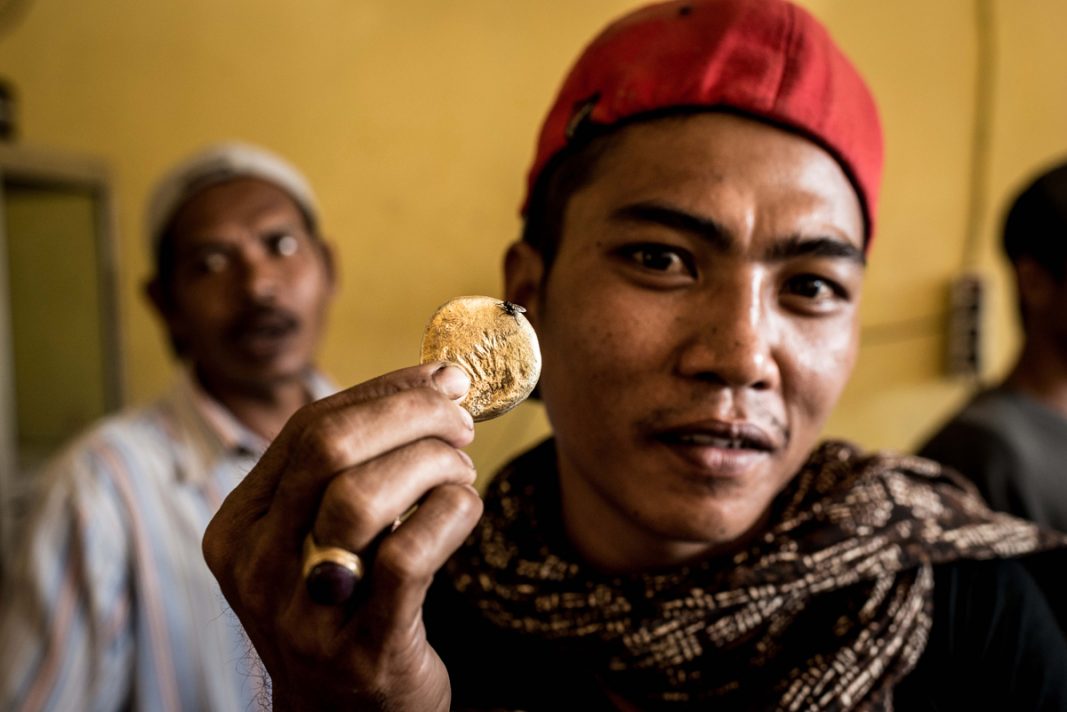
Sekotong Tengah, Lombok, 2014. A jewellery seller, in a rural village, is showing a big nugget of gold. In his shop, gold is sold 250 000 Rupia (about 16 euro) per gr.
|
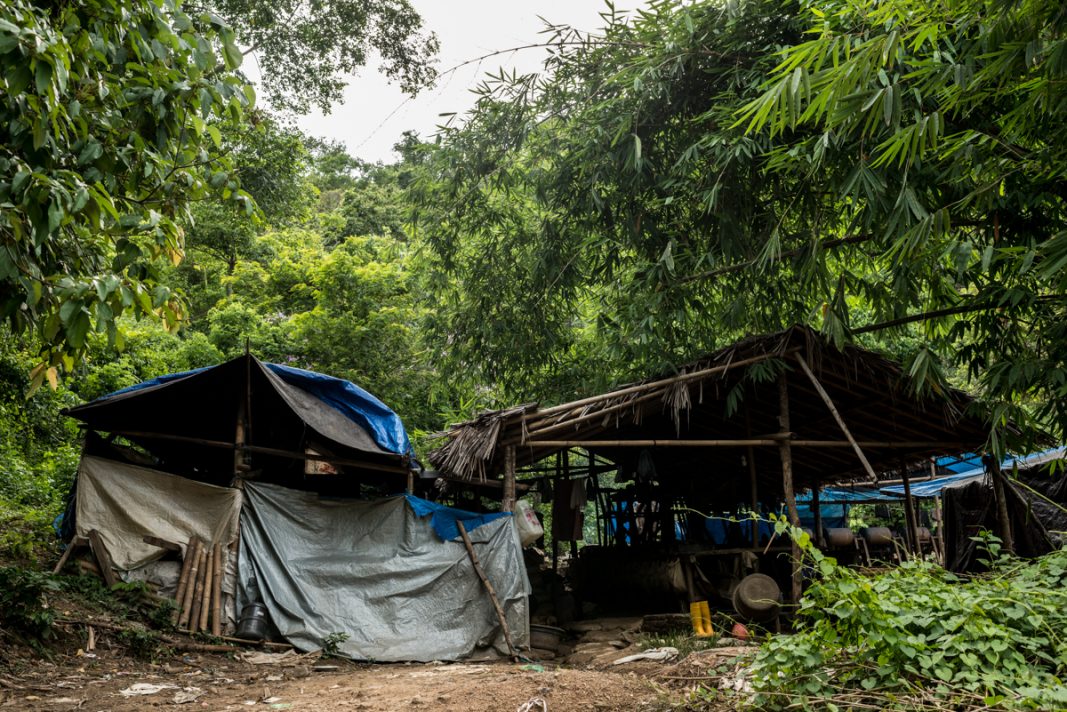
|
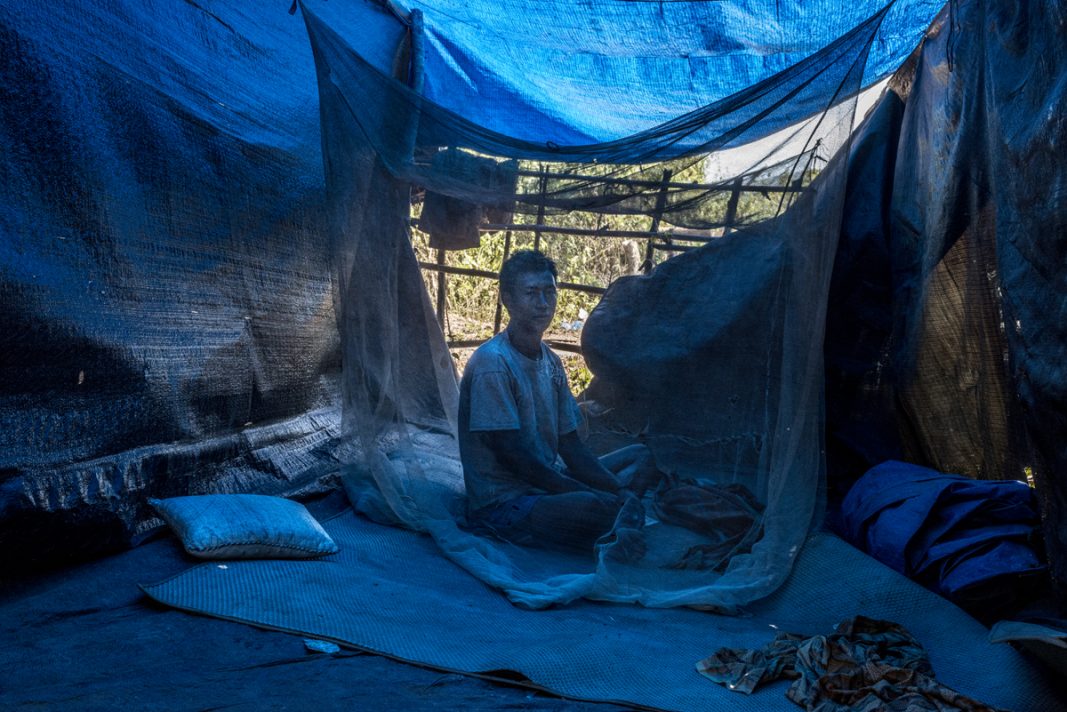
|
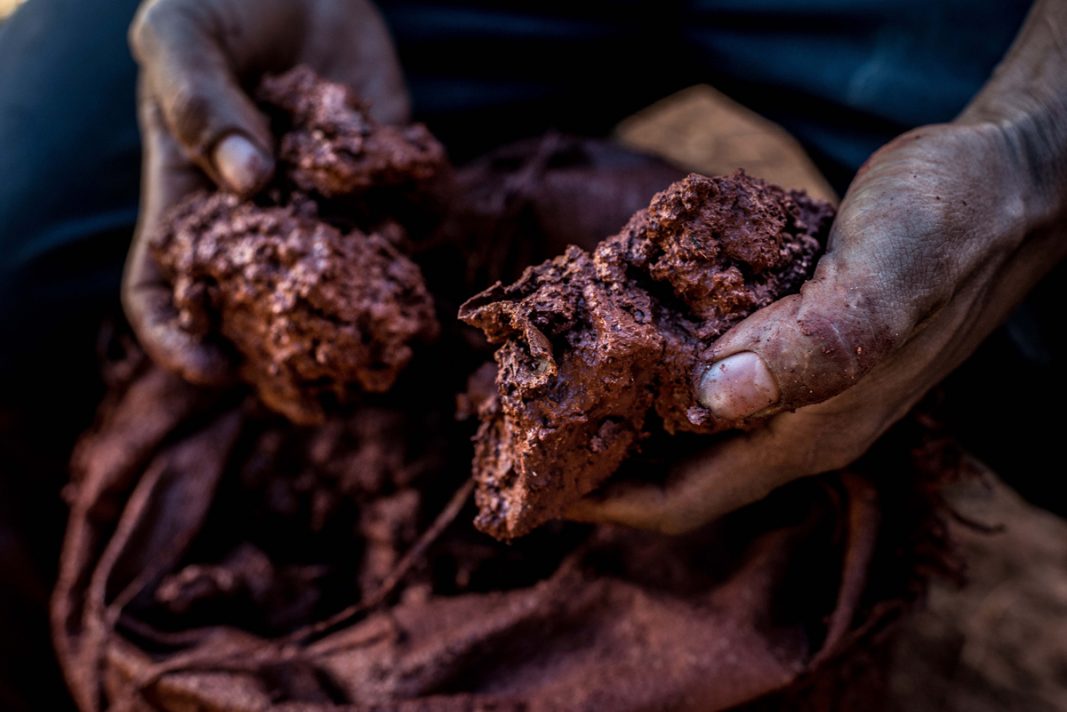
Sekotong Barat, Lombok, 2014. The soil dug from an underground tunnel inside a hill around Pelangan village. Every 30 kg of ore, which corresponds to one bag, only around 1 gr of gold can be extracted.
|
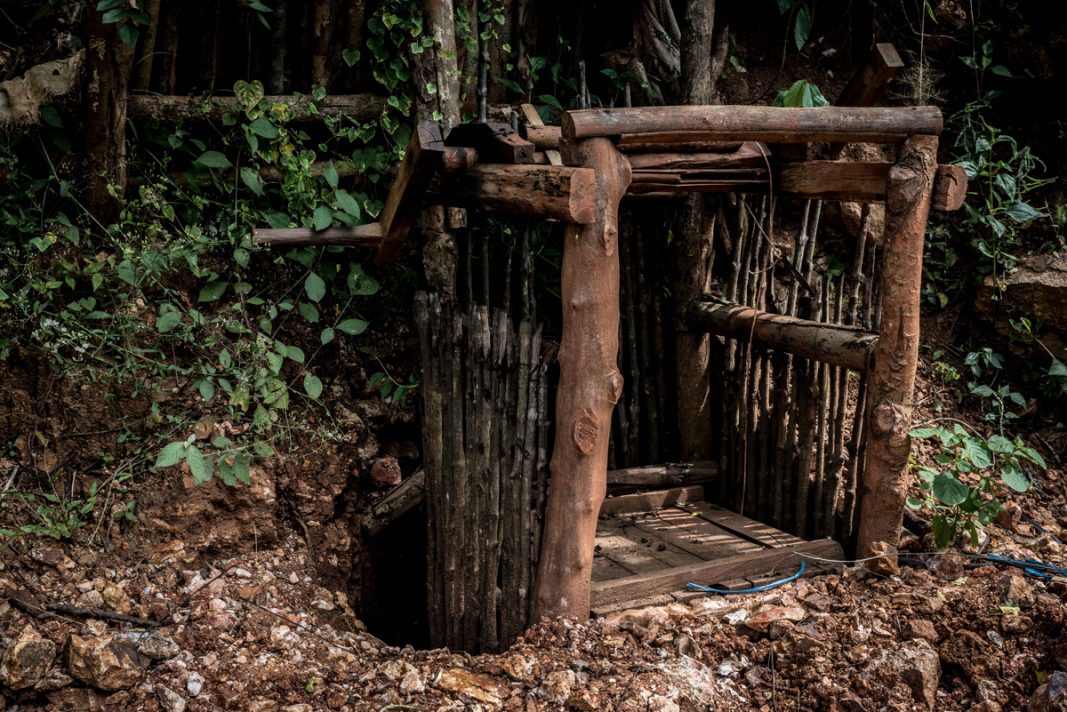
Sekotong Barat, Lombok, 2014. The closed entrance of an abandoned tunnel, on a hill around Pelangan village.
|
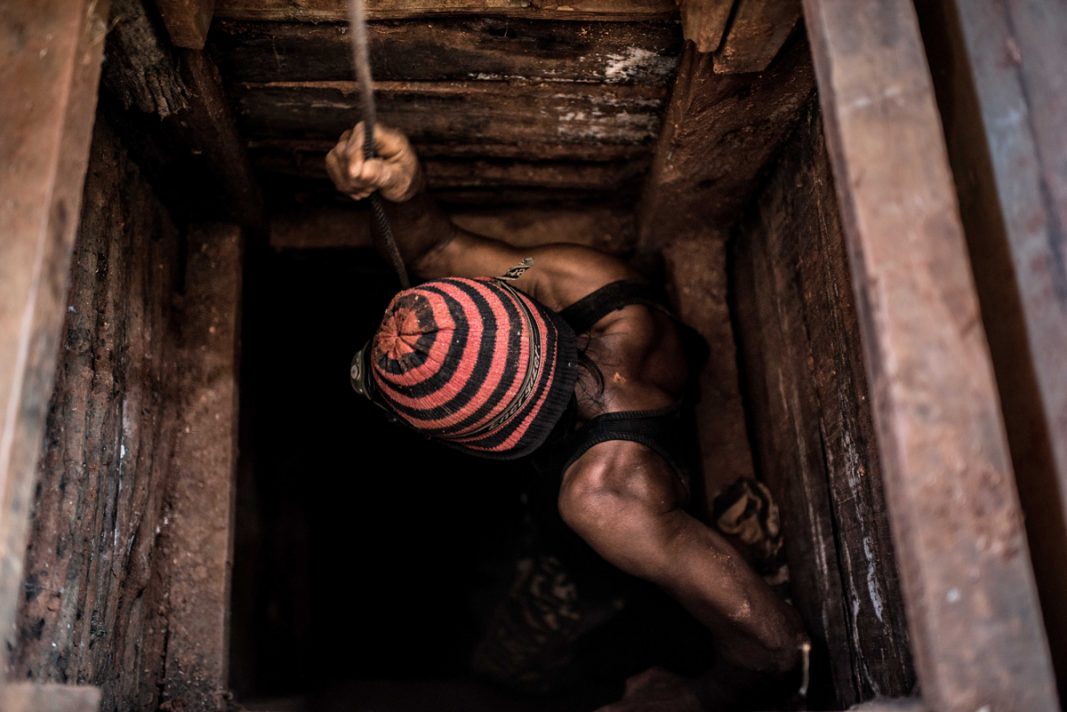
Sekotong Barat, Lombok, 2014. A miner is going down in the well leading to his underground tunnel, inside a hill around Pelangan village.
|
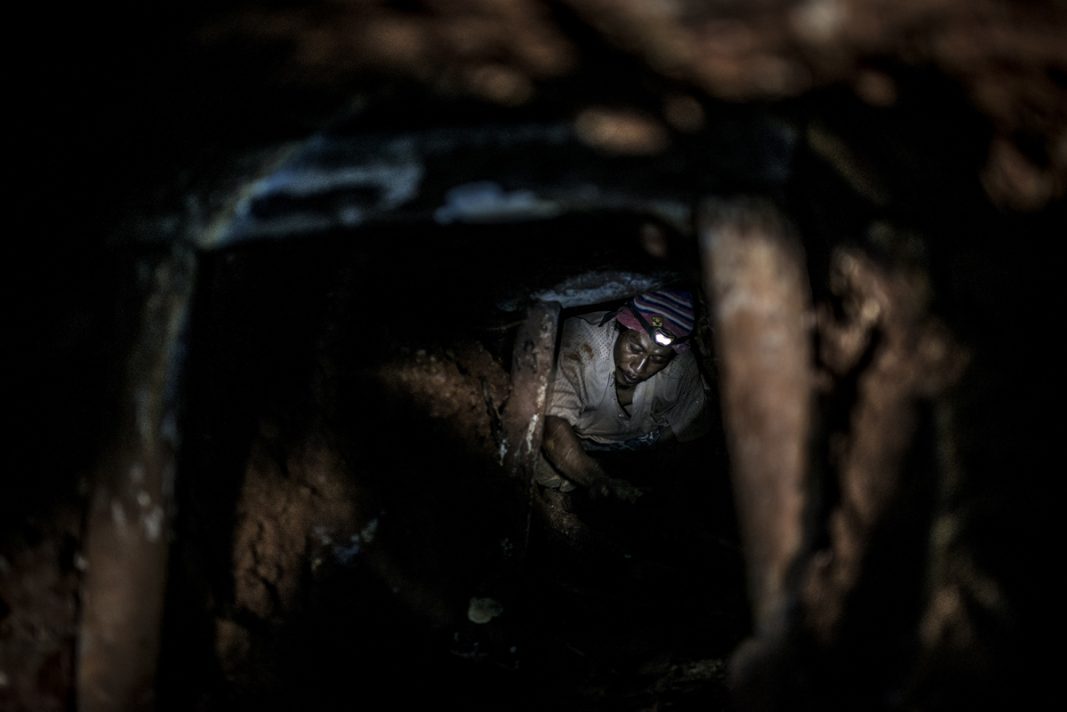
|
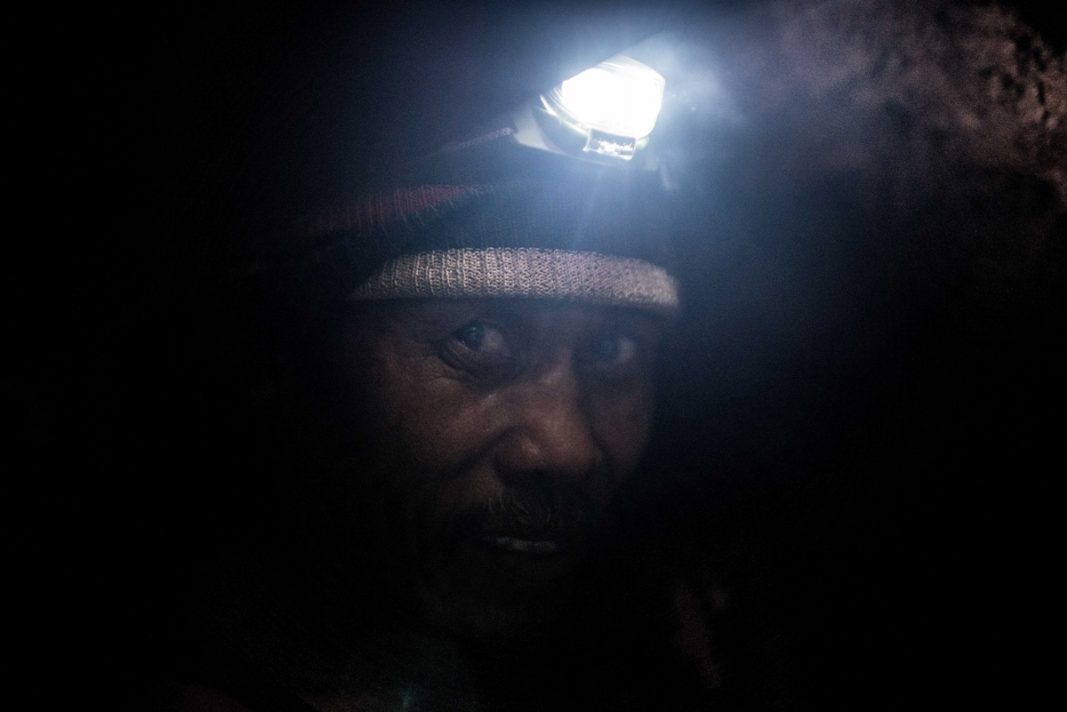
Sekotong Barat, Lombok, 2014. Inside a hill around Pelangan village, a miner, in his underground tunnel, is enlightened by his head torch. Temperature inside tunnels is about 38 Celsius degree.
|
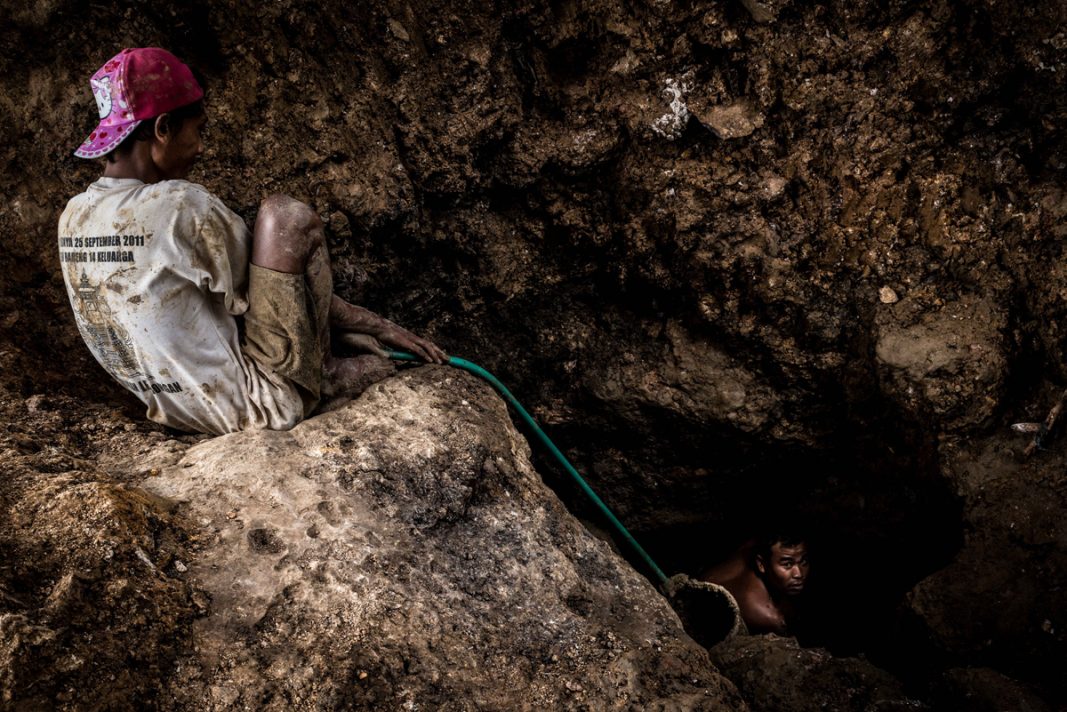
Sekotong Barat, Lombok, 2014. On a hill around Pelangan village, miners dig by hand a big well to collect ore for extracting gold.
|
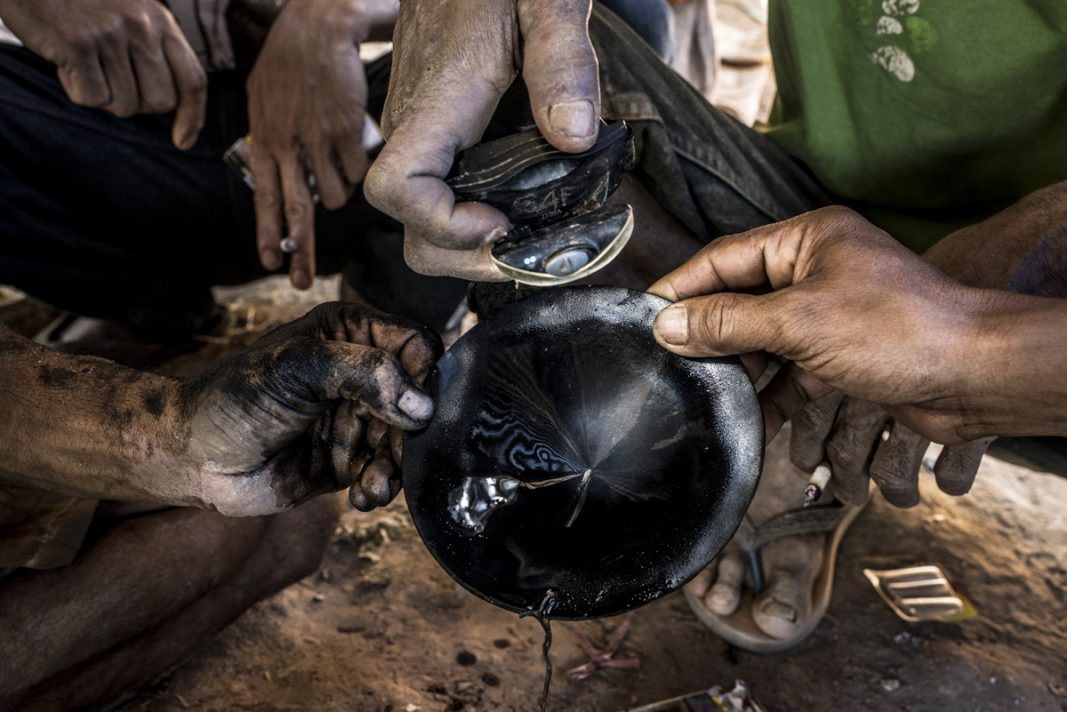
|
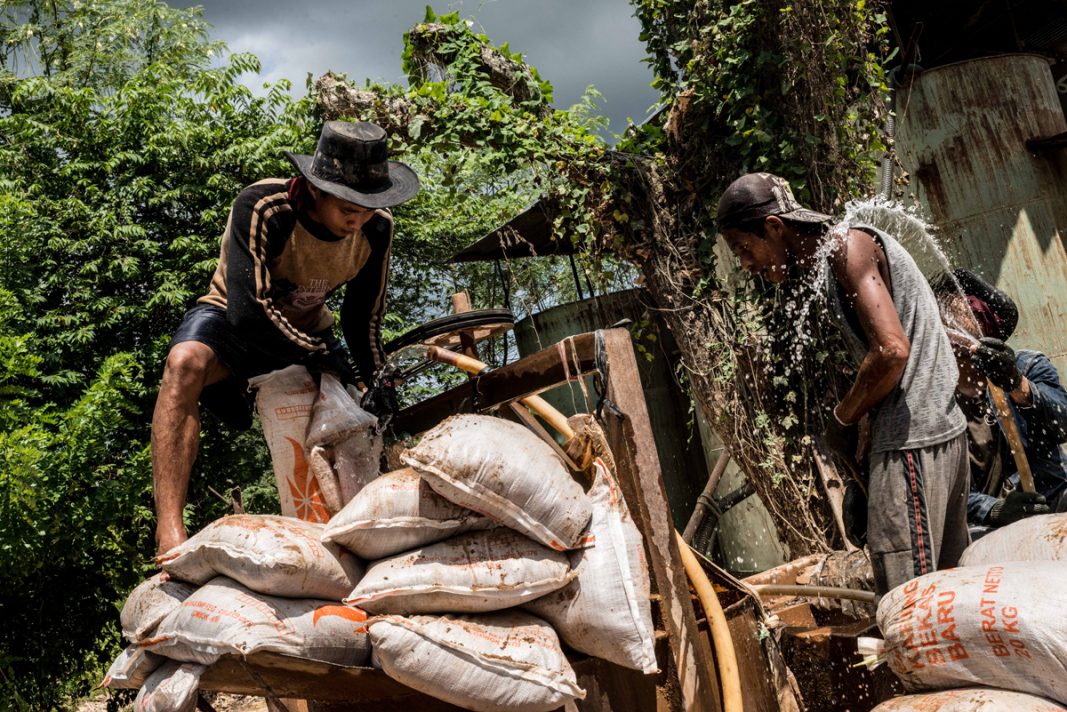
Sekotong Barat, Lombok, 2014. A cyanidation site around Pelangan village: during the processing of the sediments from the tailing pond, a worker is receiving some refreshment from the water used in the process.
|
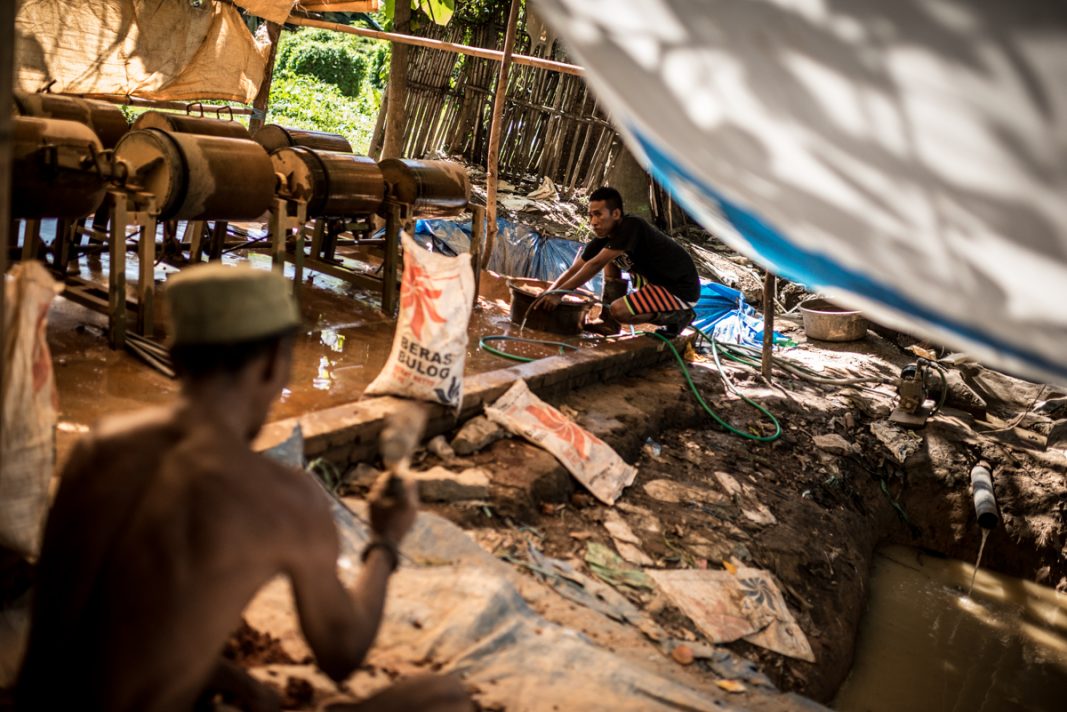
Pakerum ASGM district, Taliwang, West Sumbawa, 2014. A miner is smashing rocks while another one is uploading water and soil in the grinders ready for the extraction phase. Usually, each grinder can mill 5 kg of soil and needs 100 gr of liquid mercury to extract gold. It runs for 3 hours before the extraction phase has been completed.
|
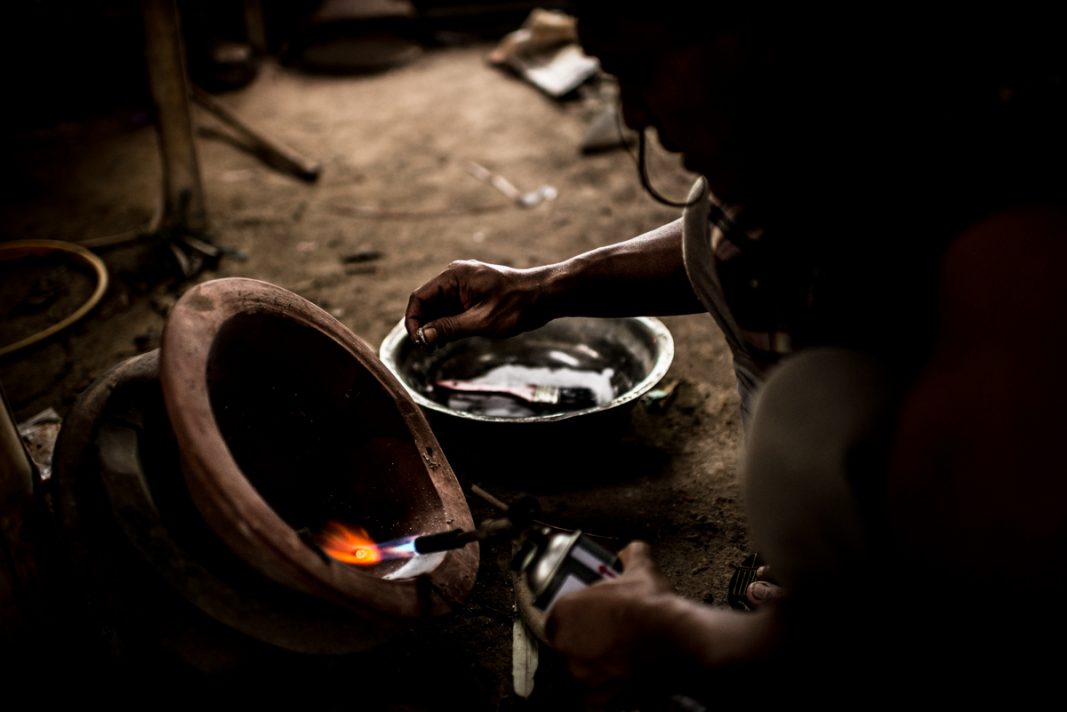
Kertasari district, Taliwang, West Sumbawa, 2014. A miner of a combined mercury-cyanidation site is burning mercury-gold amalgam at the open air, without any kind of personal protective equipment. This is the most dangerous phase of the ASGM activities: when burning the amalgam, mercury vaporizes and, if breathed, it can directly enters the body and accumulated, causing irreversible kidney dysfunction and degeneration of the nervous system.
|
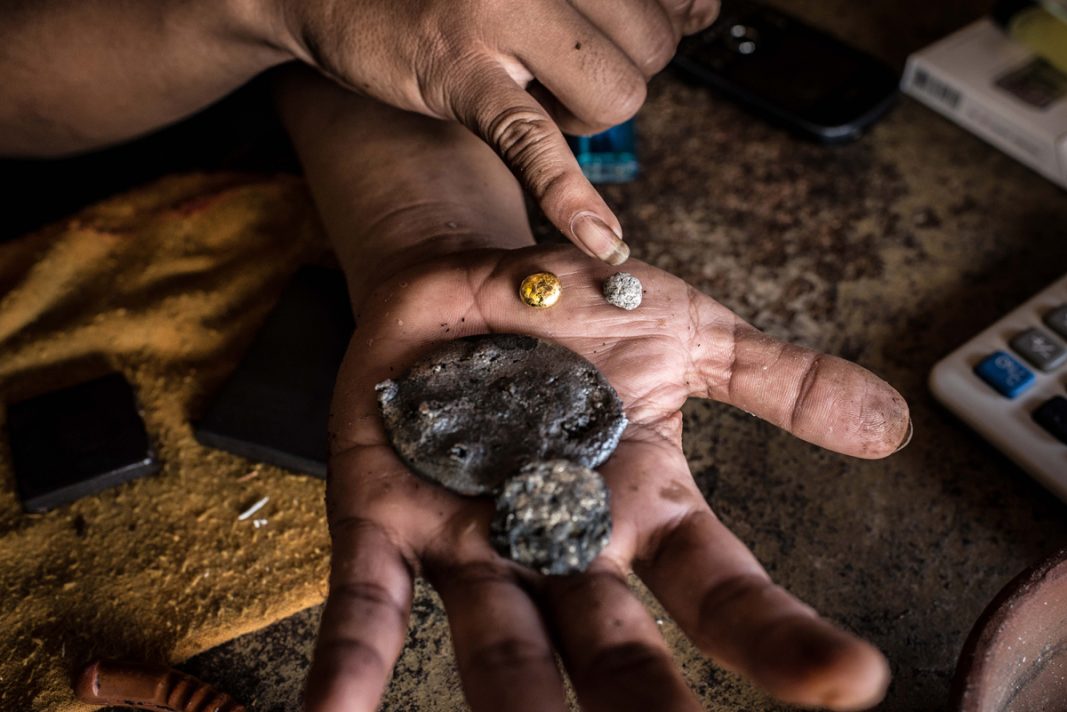
Sekotong Tengah, Lombok, 2014. In a rural village, a raw gold dealer is showing how the amalgam looks like before burning the mercury (small grey sphere) and after burning out all the mercury (pure gold sphere).
|
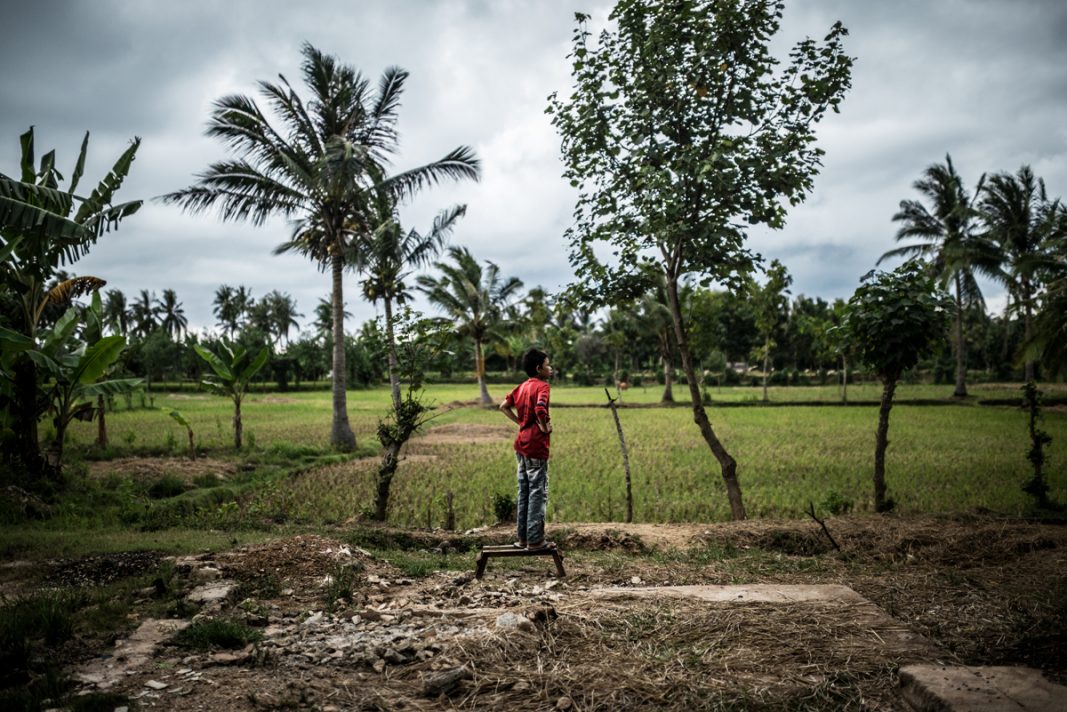
Sekotong Barat, Lombok, 2014. Agis, 13 years old, is standing on the area where the cyanidation plant was located one year ago. His family used to run the plant in the small Gili village. In 2012, the mercury concentration in Agis hair was double the WHO standard level for mercury in human hair. All around, there are rice fields: neither barriers nor protections divide the fields from the polluted soil of the cyanidation site. No remediation plan has been scheduled to clean the area.
|
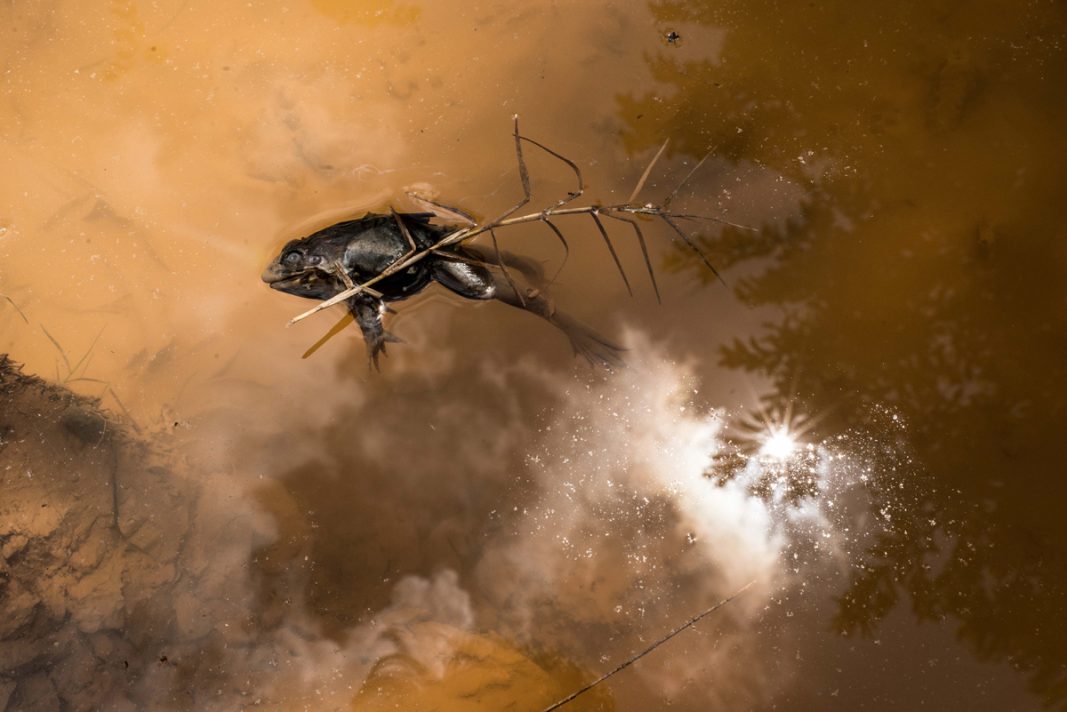
Sekotong Barat, Lombok, 2014. A cyanidation site around Pelangan village: the water and the sediments of the tailing pond are full of cyanides and mercury, highly toxic for biota and vegetation.
|
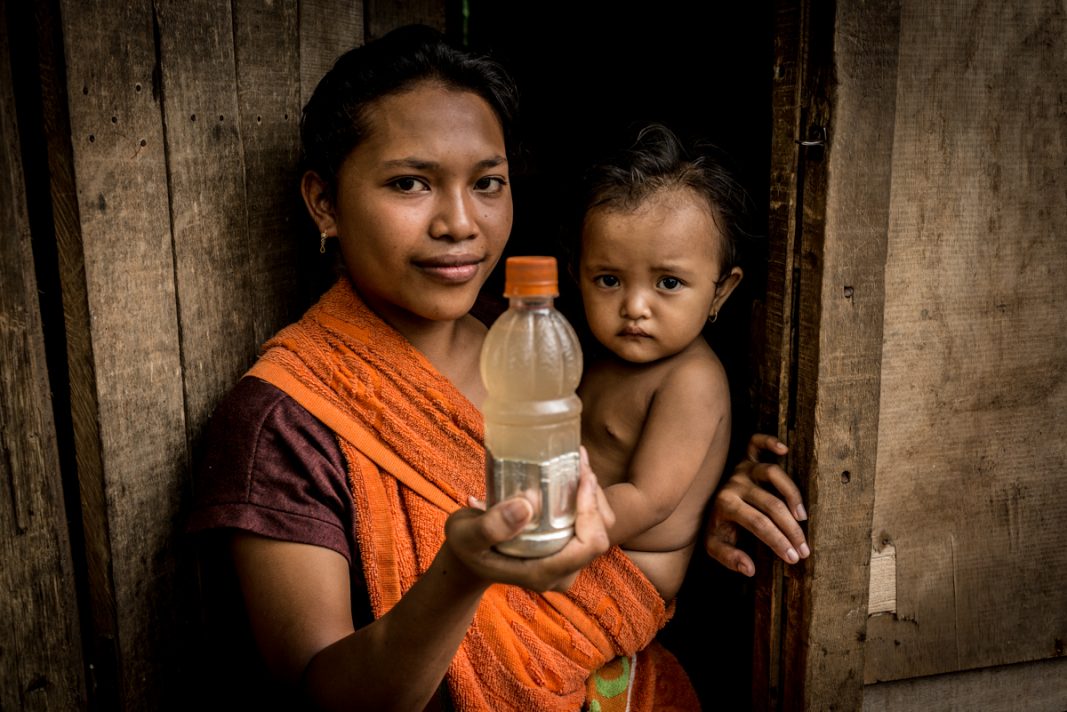
Taliwang, West Sumbawa, 2014. The wife of Hariyanto, 24 years old artisanal gold miner, is holding a bottle full of liquid metallic mercury which they keep beside their bed in the tiny hut where they live with a 20 months old daughter. They have migrated from Lombok to West Sumbawa because he found it easier to earn money in the artisanal gold mining than as street seller. Mercury is a highly neurotoxic and teratogen element.
|
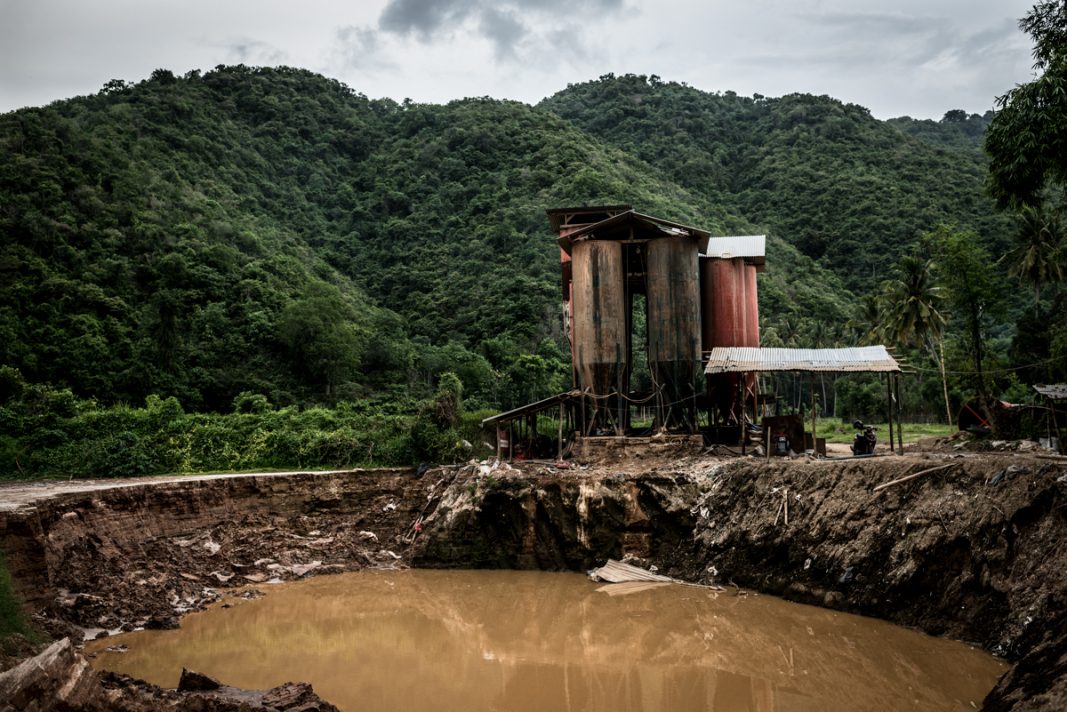
Kartasari district, Taliwang, West Sumbawa, 2014. A cyanidation site made of reaction silos and tailing pond is located just in the middle of forested hills, close to river ways, and have neither protection nor barriers to prevent environmental pollution. Miners use the cyanidation process to extract the gold remaining in the sludge after amalgamation with mercury, so that the sediments in the tailing pond are full of cyanides and mercury.
|
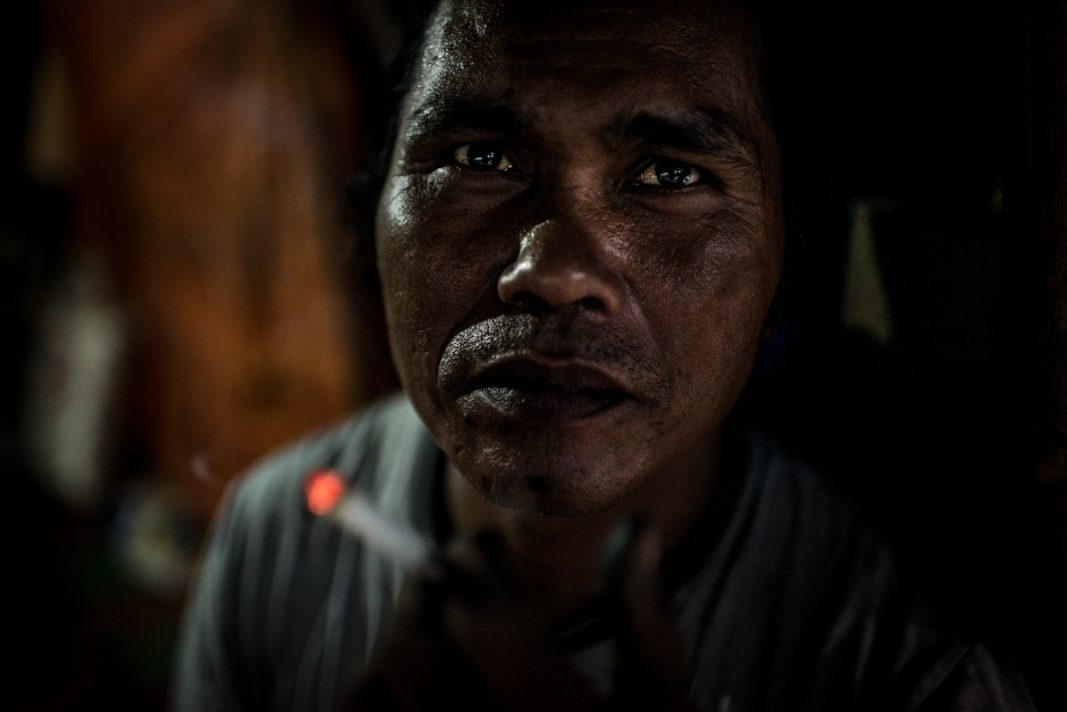
Kertasari district, Taliwang, West Sumbawa, 2014. Beni, 42 years old, starts working in ASGM in 1988. He owns the biggest batch of grinders (80 units) and cyanidation silos in Taliwang. He comes from Sumbawa and has been working as miner all around Indonesia (Kalimantan, Sumatra, Java, Lombok and Sumbawa). When moved back to Taliwang, he has earned so much money that he could build 2 houses, buy 7 motorcycles and 2 cars.
|
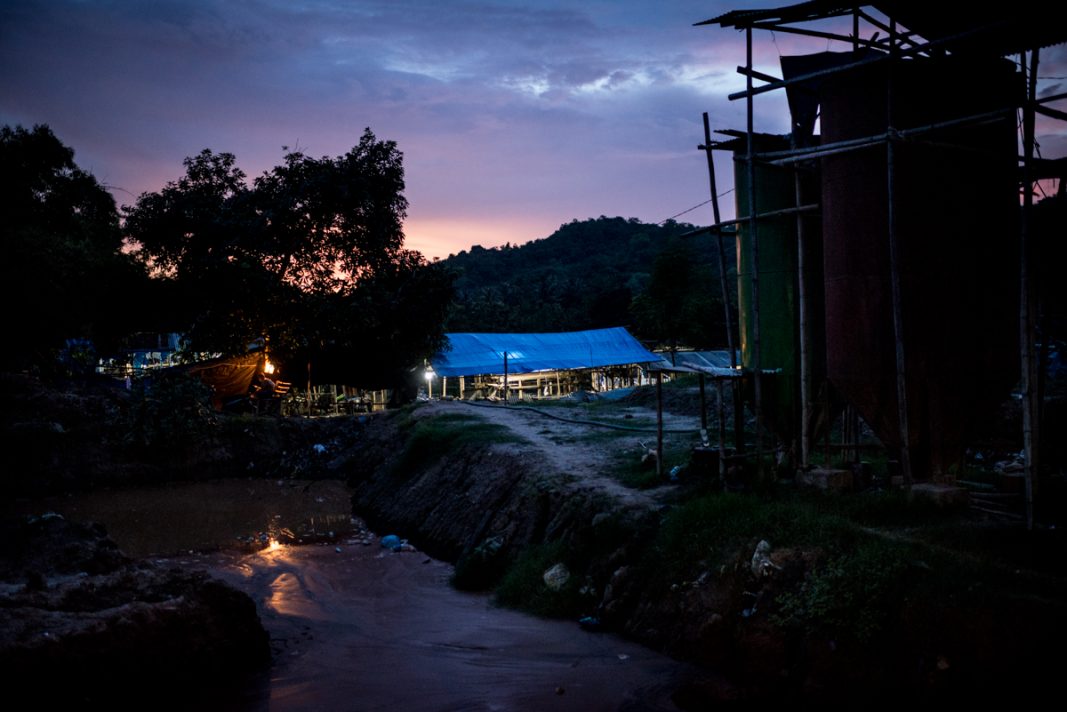
|